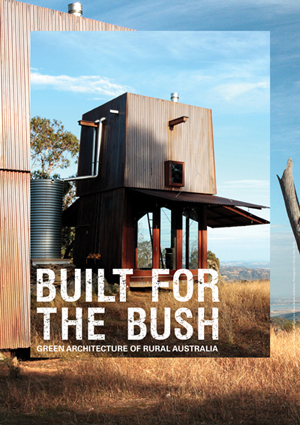Built for the Bush: Green architecture of rural Australia
This travelling now on exhibition at the Museum's Historic Council Chambers reveals that in terms of energy efficiency, Australia's 19th century settler houses were far superior to today's modern homes.
The Historic Houses Trust travelling exhibition Built for the Bush explores some of the energy efficient features of Australia's 19th Century country homes and the reappearance of many of these traditional practices in contemporary green architecture.
Despite recent efforts to make our homes more environmentally friendly, Australians now use more water and land per person than most countries including China, Russia, India and the UK.
By the mid 2030s it is estimated that worldwide we will be consuming the earth's renewable resources at twice the rate that they can be regenerated.
For Australia's early rural settlers, building simple, energy efficient homes was a necessity due to their limited access to materials, skills and resources.
One hundred and fifty years on, traditional 19th-century practices are inspiring a new generation to return to these low-energy solutions and minimise the environmental impact of modern housing.
The exhibition highlights the benefits of early settler ways that used earth and timber, natural materials that were close at hand and easily worked and corrugated iron. Simple house designs used light and air for their heating and cooling properties and water, the most essential resource for survival, was carefully captured and conserved.
The exhibition's curator Richard Taylor says in an effort to make Australian households more environmentally friendly, Australia's leading architects are adopting many of the building practices developed not long after the first settlers arrived.
"I've included in the exhibition a selection of high-end architects and do-it-yourself builders to show the range of buildings that use sustainable principles.
"In the 1960s we started to see the return of the use of natural materials and architect Glenn Murcutt revitalised the use of corrugated iron. A new era of 'inside-out' architects, led by the 'house-as-camping' philosophy of Rick Leplastrier, has also enticed us to turn off our air conditioners and let the environment back into our homes.
"In Australia, the average age of our housing is only about 35 years, a fraction of the standard age of houses in the United Kingdom or United States. This rapid changeover is responsible for enormous waste. We build our houses in imported styles that are not suited to our climate and customs, so quickly tear them down only to replace them with another fashion which will then of course also be superseded.
"Britain has set itself the target of making its housing sector carbon neutral by 2016. Discussions have been held between the Australian Government and the building industry here but there is no sign of any move to this target in the near future.
"Australian architecture and culture engages with the environment more than a lot of cultures, but our environmental record is one of the worst in the world because of our high energy consumption and production of that energy by fossil fuels. The Built for the Bush exhibition shows there are many lessons to be learned from Aboriginal and settler architecture."
An exhibition from the NSW State Cultural Institutions and sponsored by the NSW Architects Registration Board make sure you don't miss Built for the Bush, now on exhibition until 18 July. Entry is free.

